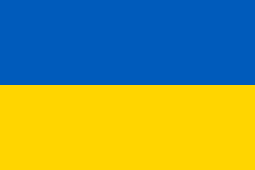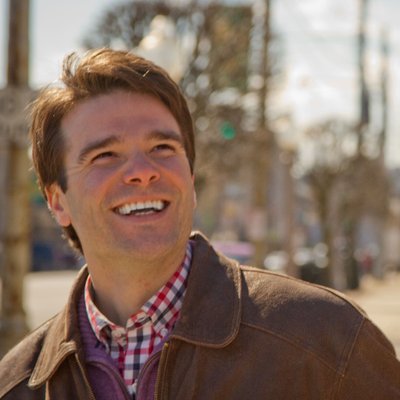The Ukrainian girl

Ukrainian Flag
On April 25th, 1943, Barbara Sapovchak was born into a poor Ukrainian family in the Southside of Pittsburgh, a large ethnic community. Barbara’s childhood as a second generation American was laden with rich Ukrainian traditions, an experience that leaves her to reminisce with fond memories.
It all began in 1898, when Teonia Michalaski and Wasyl Fecica left “the old country” in search of better opportunities. They were part of a massive wave of Ukrainian immigrants that migrated to the U.S. between 1880 and 1914 looking for work in the mills and mines. According to Barbara, many later left the Old Country because “there was a lot of turmoil then” over the growing strength of communism and “one never knew what was going to develop there”. After passing through Ellis Island, where his name was changed to Basil, Wasyl moved to Brooklyn, New York. Teonia settled in the South Side of Pittsburgh like many other migrants. In 1912, the two were married and moved in together in the Ukrainian hub of Southside.
From their marriage, Barbara’s mother Mary Fecica was born along with multiple other siblings. Tragically, Wasyl passed away shortly after, leaving Teonia, a poor Ukrainian immigrant to support the family alone. According to Barbara, her mother Mary lived with her mother and siblings in a small two room apartment in Southside. The family was so poor that “instead of chewing gum, if they had meat, they would chew on the gristle of the meat” in order to ease their hunger.
When she grew into a woman, Mary Fecica married Samuel Sapovchak (also Ukrainian) and on April 25th, 1943, Barbara Sapovchak, the subject of my interviewing, was born. Her father Samuel worked as a floor man in a mill, and her mother Mary worked at home taking care of Barbara and her three siblings. The tight-knit Ukrainian community of Southside, where the Sapovchaks lived among many other immigrant families, was full of culture and traditions from the “old country”.
The family spoke strictly Ukrainian in their household, but in the Byzantine Catholic school, the bilingual nuns taught both English and Ukrainian, allowing the children to become fluent in both languages. When I asked Barbara about learning English, she told me “though you kept your own culture, you wanted to assimilate into the American culture and so it was a given that you were going to learn English.” Though the Ukrainian customs ran deep and the new generation of Ukrainian-Americans were set on preserving their heritage and culture, Barbara says “you didn’t eschew English just to maintain your roots.”
Since most of the children at Byzantine elementary school were Ukrainians as well, Barbara didn’t have to overcome any language barriers with the other students. However, as she told me, when her older sister MaryAnn went to a kindergarten in a non-Ukrainian region of Pittsburgh, she didn’t understand English and the teachers and students couldn’t comprehend her. The language was so engrained in their minds that the children spoke Ukrainian instinctively, Barbara explained.
Surprisingly, Barbara told me that she never ran into ethnic discrimination or conflict from other American children during her assimilation into American culture, even when she transferred to a Roman Catholic, “Americanized” high school. “I never felt odd,” she said. “I felt as comfortable there as anyplace else. I didn’t feel I was looked at differently.”
Strangely, the prejudice came from other Ukrainians. The non-Americanized immigrants who had come directly from the “old country” always felt they had an edge, Barbara explained. Those who were born in the “new country” ( the U.S) were viewed as impure by those who were born in the Ukraine, and “you had to almost prove yourself” to them. “You really had to work hard to be a true Ukrainian there,” she said.
Of course, rich Ukrainian culture was a core component of Barbara’s childhood in the Southside. Traditional folk dances were taught by a teacher who visited from the Ukraine, and the children performed in costumes and garlands of ribbon at religious festivals. According to Barbara, the community would celebrate anything that was important to Ukrainian tradition. For every holiday, most of which were Byzantine Catholic events, there would be specific traditional foods, special songs to song together, processions, and classic ritualistic celebrations. “We were immersed in it,” Barbara reflected fondly. These festivities (like St. Nicholas Day) were big occasions that drew the entire community together as one, and to Barbara, “you really felt like you were part of an ancient tradition.”
Religion was another central aspect of the Sapovchak family life, as well as for all the Ukrainians in Southside. Families went to church multiple times a week, and in fact, it was the Byzantine Catholic faith that united many of the settlers. In Barbara’s opinion, religion was also a distinct contrast between the Ukrainian and American cultures. The Roman Catholic Faith was very “Americanized and Western European” to the immigrants, while Byzantine was much more Eastern European”. According to Barbara, the religious difference was apparent in the people. One of the family’s biggest influences was the local priest, Father Kindy, who taught the children Latin, motivated them to succeed, and served as a consistent support system for the Southside community.
After high school, Barbara went on to be the first ever in her family to graduate from college. She attended Pitt for Mathematics on multiple scholarships, held a fulfilling career at Westinghouse, married, and had six children of her own. She now lives happily with her husband William Jacob and has nine grandchildren.
Her life as a Ukrainian child is one of Barbara’s warmest memories: one that she will never forget. When I asked Barbara if she had any final thoughts, she told me that she wished she had passed the Ukrainian traditions on to her six children: taken them back to the Southside, brought them to a Byzantine Catholic church, and spoke Ukrainian at home with them. Reflecting on her childhood, Barbara looks upon her experience with fond memories and longs to immerse herself in the culture once again. “Because I miss it”, she says. “I miss the church, I miss the singing, I loved the dancing, I loved the songs from the Ukraine….so all those things I remember, and I miss them, but I don’t experience them anymore.”








